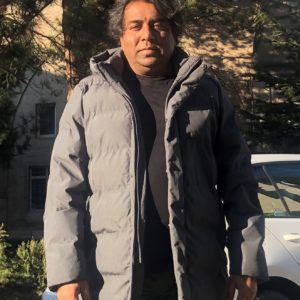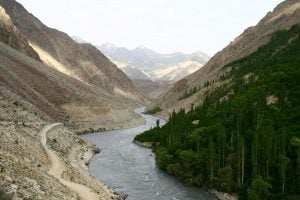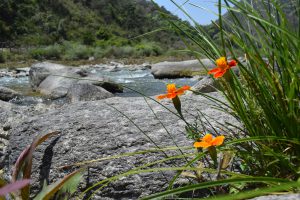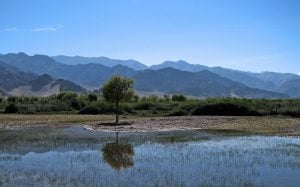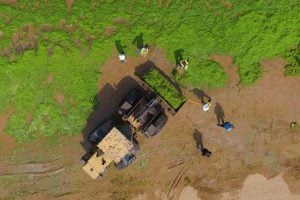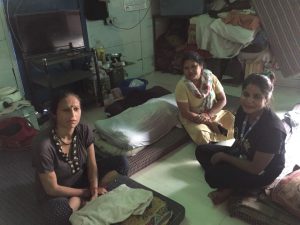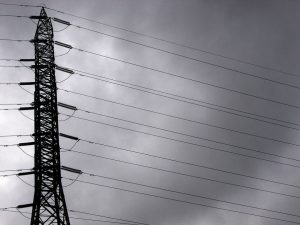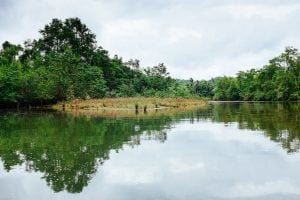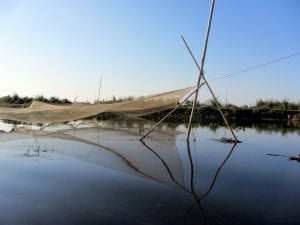Samooda, who goes by one name, is a Bengali speaking widow and mother of nine. She has bitter memories of the deadly 2015 Karachi heatwave that killed her two children, nine-year old daughter Noor and 16-year son Rasheed. She works as a daily wage labourer at the crab factory in her neighbourhood.
She now lives in a small makeshift hut made of wooden logs, palm leaves, cloth sheets and gunny bags, with the flag of Pakistan on top. She built the hut after moving from a one room house nearby.

Both her children, Noor and Rasheed, were feeling weak. They were vomiting and complaining of headaches. She took them to a small private clinic in the neighbourhood, where the doctor said they were suffering from heatstroke and gave them some medicines. He also put them on intravenous drips. But it was too little, too late. Noor died that night, and Rasheed the next morning.

In 2016 she decided to move. She sold her only goat and bought some land reclaimed from the sea. This is done by cutting down mangroves and dumping building debris over the area cleared, to push out sea water.
While it is a little cooler in her new home, it’s not much of an improvement. The new house is located next to mangroves that stop the breeze, and the standing sea water – often mixed with sewage – “almost boils” around the hut. At such times she closes all the openings in the hut with cloth, and she and her children use hand fans to cool themselves.

She lives in one of the Karachi’s biggest slums, the Machar Colony, which literally means “Mosquito Colony’. Adjacent to Karachi Port, Machar Colony is spread over miles, with a population of approximately 700,000 people. They represent multiple ethnicities – Bengali, Burmese, Afghan, Pashtun, Mohajir, Sindhi, Kachhi – all united by poverty. Much of the land of the colony was created by reclaiming it from the sea by dumping garbage, debris and stones. The surface of the colony is not flat. Built with debris, the zigzag streets are bumpy, and there are heaps of garbage burning everywhere. Officially the colony is considered an ‘illegal slum’. Therefore, the authorities do not provide drinking water, sanitation, electricity or anything else. Women and children suffer the most.

Anyway, it is not electricity, but water that is the most precious commodity.
“Six litres of water cost me PKR 30 (USD 0.26) and I need at least 30 litres for drinking, cooking and bathing needs of my family. After working for 12 hours a day I hardly earn PKR 300 (USD 2.60),” said Samooda. Almost half of her income is spent on buying water for her family every day. Sometimes, when she has some extra money, she gives it to her younger daughter to buy some ice from the shop, so that she may give her children some cold water to beat the heat.

When she heard from a coworker at the crab factory about the heatwave forecast, Samooda took time off and stayed at home to look after her children. “After the death of my two children, I came to know that there had been a heatwave forecast by the government then. So I panicked after hearing the news this year, as I was afraid that if the city experienced a similar heatwave, any of my children may die.”
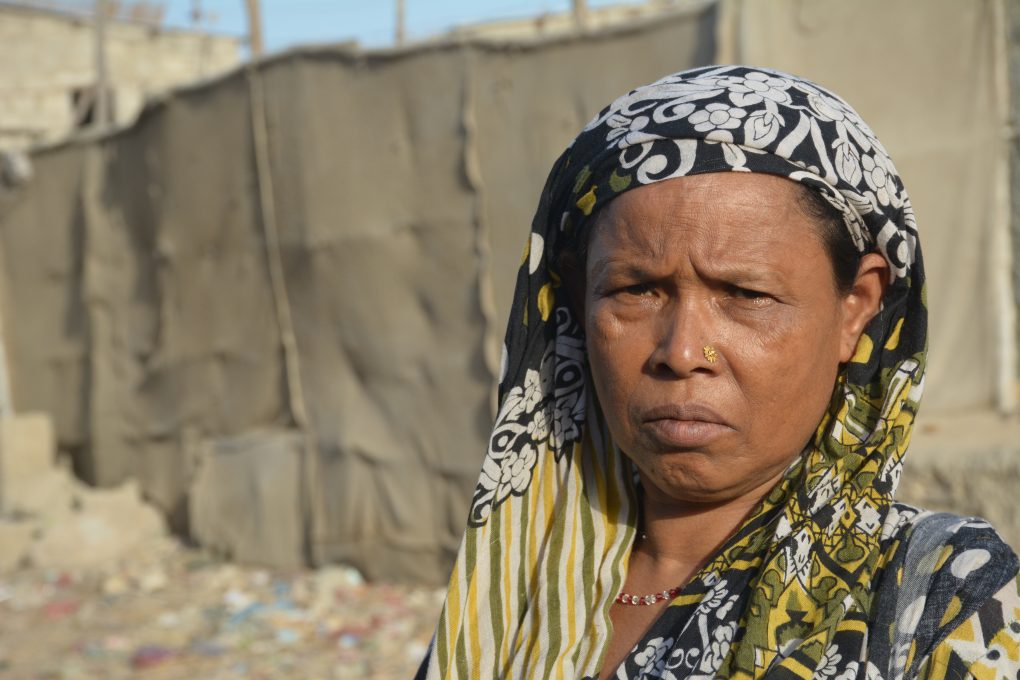
Far from these bickerings, Samooda knows she has to live with the heat, and to take care. One of the ways that she has done so is by rejecting the burqa, or black cloth full body veil. The burqa is culturally important in the Bengali speaking community that she is a part of. But Samooda said that during summer a few years ago when she was taking a long walk she fainted in the street. Since then she has stopped wearing the burqa.

Traditionally women have to wear the long black burqa in some communities, but it can be stiflingly hot [image by: Amar Guriro]
![<p>In the slums, those women who can’t afford to buy water, have to walk long distances in search of water, even during heatwaves [image by: Amar Guriro]</p>](https://dialogue.earth/content/uploads/2018/05/08.jpg)
